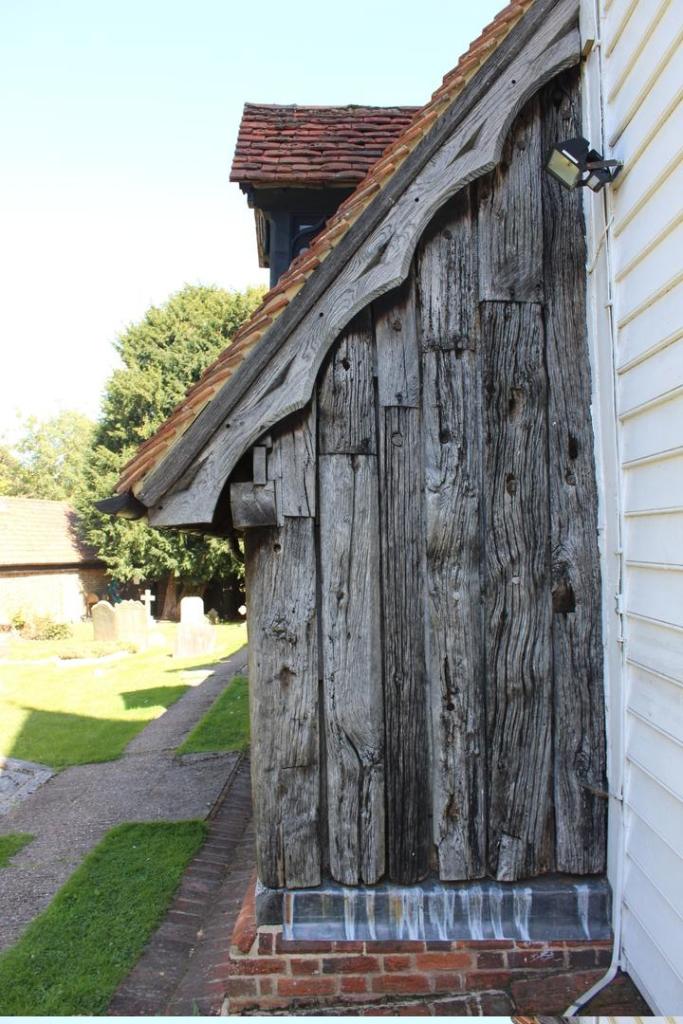Location: https://w3w.co/charmingly.dusty.weedy

Nestled in a serenely quiet part of the Essex countryside lies the Grade I listed St Andrew’s Church at Greensted. It is a small unassuming church reachable by an equally unassuming side road. On closer inspection the church, who’s full name is ‘The Church of St Andrew, Greensted-juxta-Ongar’ has walls which are composed of split logs, taken from oak trees and put together using a ‘stave-built’ construction technique. This was quite common in the Nordic countries but was rarely seen in England, making St Andrew’s an architectural rarity. It also holds the title of oldest wooden church in the world and the oldest ‘Stave Built’ timber building in Europe.

In 1960 an archaeological investigation inside the chancel concluded that there had been two earlier wooden buildings on the same site dating back to the 6th, and 7th centuries. In the same year an investigation on behalf of the Bishop of Chelmsford took place using the very impressive sounding technique of ‘Dendro-magnetics’ and suggested that the original 53 oak timbers dated from 845CE replacing an 11th century date for the structure that had been widely assumed beforehand. However a investigation carried out in 1996 by Sheffield University’s Dendrochronology Laboratory, which is part of their Archaeology department referred to this as an ‘otherwise unknown technique’ and included it in a number of 1950s and 1960s techniques which today are widely regarded as unreliable. Their work clearly refutes this remarkable specific date which at the time was taken up by many commentators and still appears in the Church and many other places online today. Thankfully even with the addition of two centuries the church still retains its title of oldest wooden church.


Along with its great age the Church is known as the temporary resting place of the body of Saint Edmund or Edmund the Martyr, who was King of East Anglia in the 9th century. Edmund was England’s first patron saint before he was replaced by the more chivalric friendly Saint George, He was killed by the Vikings in 869 and is said to have rested in the church in 1013 on his way to his final burial place at the aptly named Bury St. Edmunds in Suffolk in a stone abbey built by King Cnut. However, while there is some evidence of his journey from London to Suffolk, there is no record that his body, or more likely his bones as he had been dead for over 40 years, rested in a chapel close to Ongar.

Even if the former Patron Saint of England has never rested here, St. Andrew’s Church has a remarkable aura of peace and tranquillity and can be considered as a wooden sentinel preserving the memory of a bygone era.

Links
- Church’s website – http://www.greenstedchurch.org.uk/history.html
- Wikipedia page – https://en.wikipedia.org/wiki/Greensted_Church
- 1996 Dendrochronology report – https://web.archive.org/web/20160508084935/http://services.english-heritage.org.uk/ResearchReportsPdfs/014-1996.pdf
- Historic UK page about the church – https://www.historic-uk.com/HistoryMagazine/DestinationsUK/Greensted-Church-The-Worlds-Oldest-Wooden-Church/
- Wikipedia page about Stave Churches – https://en.wikipedia.org/wiki/Stave_church
- Text of the Jack E Crawford Stringer letter to the Bishop of Chelmsford regarding ‘Dentro-magnetic’ date (31/8/1960) – http://anglo-saxon.archeurope.com/religion/churches/greensted-st-andrew/the-dendro-magnetic-date-of-ad-845/
- Historic UK page on St Edmund – https://www.historic-uk.com/HistoryUK/HistoryofEngland/Edmund-original-Patron-Saint-of-England/